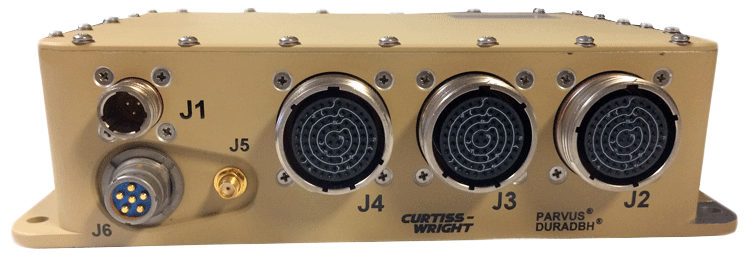
The combination of today’s latest commercial off-the-shelf (COTS) hardware and command, control, communications, computers, intelligence, surveillance, and reconnaissance (C4ISR) modernization initiatives – such as the U.S. Army’s VICTORY standard – provides a common infrastructure for integrating new capabilities into ground vehicles while improving size, weight, power, and cost (SWaP-C) by eliminating redundant components. The VICTORY – the U.S. Army’s Vehicle Integration for C4ISR/Electronic Warfare Interoperability – initiative fosters the use of open network interfaces, open data formats, and open protocols to enable the integration and sharing of networking, processing, display resources, and military position navigation timing (PNT) services. While not intended to define how line-replaceable units (LRUs) are built, the VICTORY open architecture standard does define how LRUs can intercommunicate and share data and resources. One of the objectives of VICTORY is to decrease the SWaP for the myriad C4ISR subsystems that threaten to overcrowd the crew areas inside a vehicle. At the same time, VICTORY integration delivers increased situational awareness while reducing the warfighter’s operational burden by enabling the sharing of data between formerly stovepiped subsystems.
In a complementary effort, running in parallel to the VICTORY enterprise, the U.S. Army is advancing an Assured PNT program that will enable warfighters to transition from using less capable legacy military GPS user equipment (MGUE) such as Precision Lightweight GPS Receiver (PLGR) and Defense Advanced GPS Receiver (DAGR) SAASM (Selective Availability Anti-Spoofing Module)-based GPS devices. Assured PNT adds support for networkable GPS devices based on a new military signal called M-Code (Military Code). To speed the deployment of this GPS technology, the U.S. Congress has directed military acquisition managers to buy only M-Code-capable devices starting in fiscal year 2018.
PNT technologies provide an example of the challenges and opportunities that efforts like VICTORY were initiated to address: Today, when program managers add proprietary or duplicative GPS receivers to their platform, they increase the weight and price of the system. Also helping to drive the transition to newer, networkable PNT technologies is the fact that in addition to not typically supporting network connectivity, PLGR and DAGR are unable to operate at the latest PNT data assurance levels. Lack of network support and its effect on ground vehicles is highlighted by one Stryker vehicle variant that today carries nine separate DAGRs, each with its own antenna, and each of which operates completely independent of the others.
Compared to PLGR and DAGR, M-Code gives users access to a higher-power signal that is more resistant to jamming and interference, along with improved message formats and signal modulation techniques that make it both faster and more accurate. In addition to improving military GPS signals, M-Code hub devices support Ethernet networking and address the need for scalable distribution of PNT data. Moreover, M-Code receivers feature advanced security aimed at preventing unauthorized access or exploitation by adversaries.
Historically, tactical ground vehicles have been burdened by large “bolt-on” C4ISR electronics packages equipped with proprietary, stovepiped communication interfaces that were coupled with numerous independent GPS peripheral devices. This approach taxed the technology acquisition, upgrade cost, and interoperability of vetronics subsystems for vehicle programs. The crowded vehicles also had less physical space allotted for people, ammunition, and supplies. Initiatives like VICTORY are helping to mitigate these SWaP burdens. Since every device plugged into a VICTORY network backbone will be able to use a single GPS system, only one such device will be required in a vehicle. The end result, transparent to the warfighter, will be a roomier vehicle cabin and more efficient data sharing. For the ground-vehicle program manager, the benefits will include a greatly reduced overall lifecycle cost for maintaining the platform.

A COTS solution now available for integrating M-Code GPS into ground vehicles is Curtiss-Wright’s second-generation DuraDBH-672 Digital Beachhead Gigabit Ethernet switch and vetronics computer subsystem. This VICTORY appliance supports an integrated M-Code Ground-Based GPS Receiver Applications Module (GB-GRAM-M) and addresses the U.S. Army’s GPS modernization programs (Figure 1).